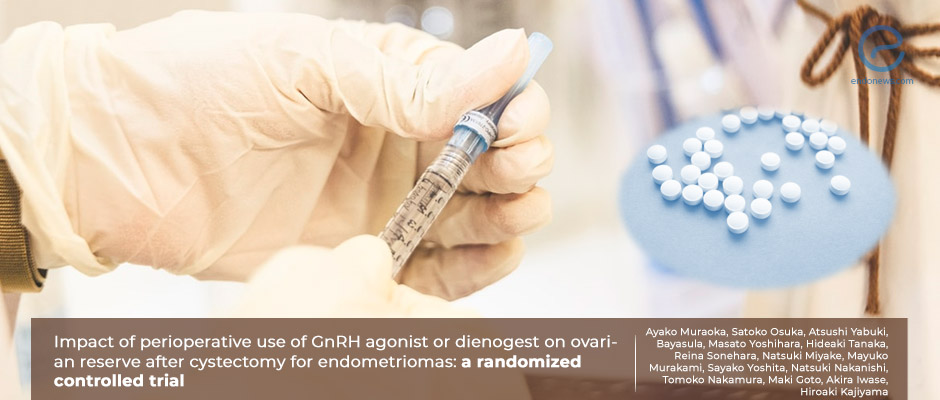Which one is more effective for the preservartion of postoperative ovarian reserve?
Jan 20, 2022
Dienogest seems to be more effective than GnRHa in preserving ovarian reserve after endometrioma resection.
Key Points
Importance:
- Ovarian reserve may be compromised after laparoscopic cystectomy for endometrioma management.
- Efforts for preserving ovarian reserve are important.
Highlights:
- Preoperative dienogest treatment was found to be more effective than GnRHa to preserve ovarian reserve, assessed by Anti-Müllerian Hormone (AMH) levels.
What's done here:
- A Japanese paper measuring and comparing the effectiveness of GnRHa and DNG in preserving ovarian reserve after laparoscopic cystectomies.
- The study included 49 women diagnosed with endometrioma larger than 4 cm (22 in the GnRHa, 27 in the DNG group).
- All women perioperatively received either GnRHa or DNG in a randomized manner. AMH levels were measured as a marker of ovarian reserve.
Key Results:
- After 1y follow-up, most DNG group patients retained their pretreatment AMH serum levels, indicating the return of ovarian reserve.
- No patient in the GnRHa group retained their preoperative AMH level.
- To investigate the mechanism of hormonal treatment, 42 cytokines and growth factors were measured in patients' sera.
- Five cytokines (IL-6, SCF, CXCL12, CCL7, and Leptin) were found to be upregulated in the GnRHa group and downregulated in the DNG group.
- IL-6 levels of the DNG group were statistically significantly lower compared to the GnRHa group.
Limitations and strengths:
- Instead of a double-blind study, this study was planned as a randomized controlled trial.
- The postoperative hormonal treatment group remained small when compared to the control group.
Lay Summary
Although cystectomy is the most preferred treatment of endometrioma, it is still a matter of debate as it may cause a reduction in the quality and number of remaining follicles, especially important for women who are planning to conceive. Anti-Müllerian hormone (AMH) is a reliable serum marker to reveal the ovarian reserve and facilitates determining and selecting the operational approach for endometrioma.
Preoperative GnRHa or DNG treatment is helpful in improving the pain symptoms, reducing the size of endometrioma, and suppressing the inflammatory reaction. To clarify and to compare their beneficial effect on ovarian reserve, Muraoka et al. from Nagoya University, Japan, conducted a randomized controlled trial on 49 women who were diagnosed with endometrioma who were randomly categorized into the GnRHa and DNG groups.
The serum AMH levels were measured 1 and 2 months before the operation and 1,2,6, and 12 months after the endometrioma resection, and after 1y follow-up, it was found that most DNG group patients retained their pretreatment AMH serum levels, indicating the return of their ovarian reserve while none of the patients in the GnRHa group retained preoperative AMH level.
The researchers also used cytokine array analyses to investigate the mechanism of hormonal treatment, and it was found that IL-6 levels of the DNG group were significantly lower compared to the GnRHa group.
This study states that preoperative treatment selection is important for postoperative ovarian reserve protection. The paper was recently published in 'Reproductive Biology and Endocrinology.
Research Source: https://pubmed.ncbi.nlm.nih.gov/34872568
Anti-Müllerian hormone GnRH agonist dienogest Interleukin-6 cystectomy ovarian reserve endometrioma endometriosis.

